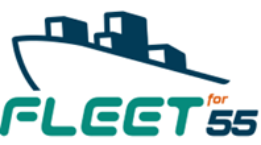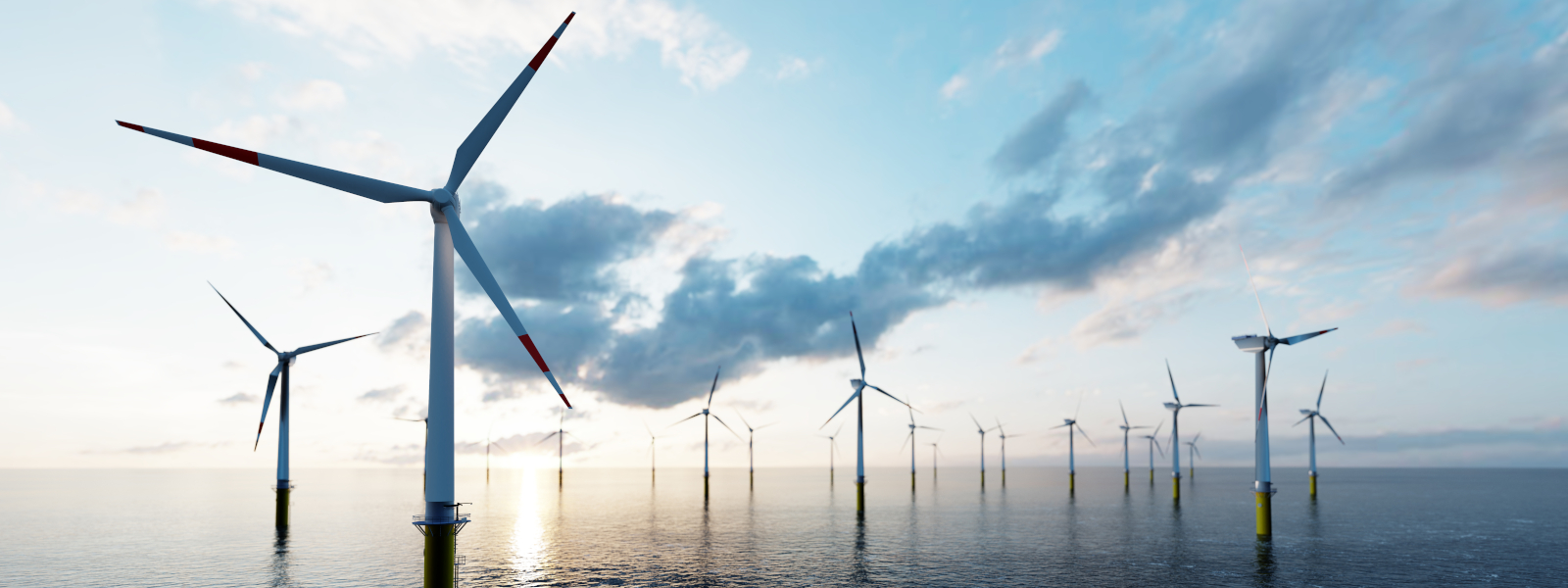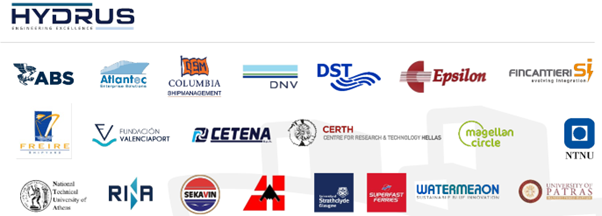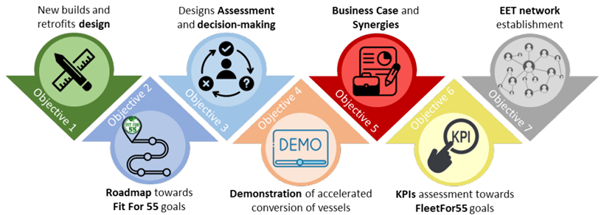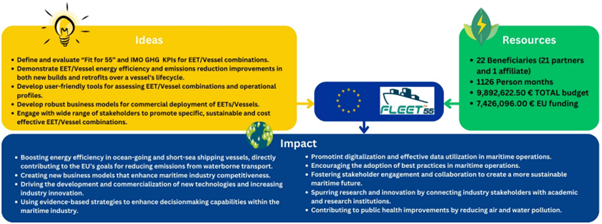Overview
FLEETfor55 is an ambitious 42-month project funded by the European Union under the Horizon Europe Programme (Horizon Innovation Action call HORIZON-CL5-2024-D5-01-12). The project focuses on maritime transport applications, aiming at becoming a lighthouse project in the forefront of retrofit and new vessel designs for short sea, inland waterway, and high seas vessels. FLEETfor55 aims to ensure optimum assessment, integration, and exploitation of emissions reduction and efficiency improvement technologies, collectively referred to as Energy Efficiency Technologies (EETs) and their combinations, applicable in business cases that consider specific technical, operational, and commercial characteristics of each type of vessel, while being applicable at an EU level by 2030.
